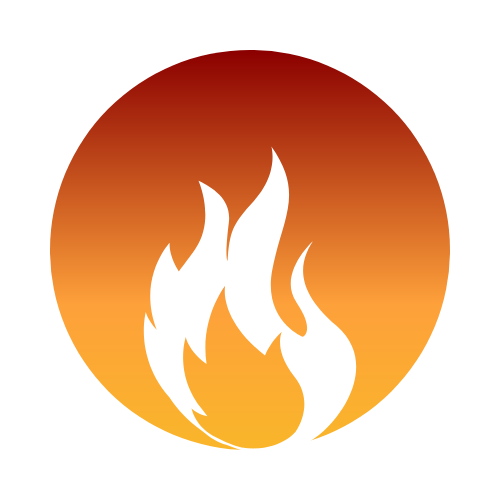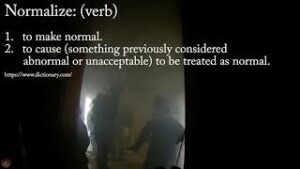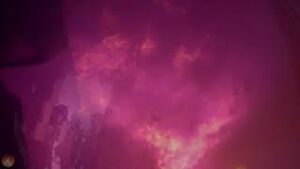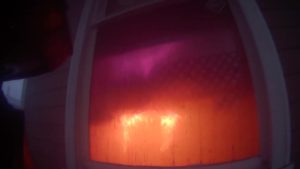Anacortes Floor 2 Bedroom 2
This burn brought a few concepts to light when it comes to fire attack and how we train for it.
The set-up: The fire room is a large bedroom that is off set to the right from where the nozzle begins the attack. The roll over was allowed to come out of the fire room, travel through the adjoining room, and enter the living room style space where the nozzle team and observation group were staged.
The fire attack: The nozzle person had been trained most of their career in the school of short bursts into the overhead (penciling) and had never practiced flowing and moving. They had been coached the day before on how and why to perform a prolonged (5 – 10 second) hit. They understood and believed in the concept of using the reach to cool in front of them and in flowing overwhelming water. They had performed well in the sterile outside environment. However, when placed in the live fire environment they performed a quick hit (2 seconds) and then began to advance. In fact, they shut down when fire was still visible in the overhead in front of them. Only when they were immediately met with fire a second later did they flow long enough to truly gain control of the environment ahead of them.
This experience brought the following things to mind.
#1 You will do what you have trained to do.
While this is a well-understood concept it was interesting to see it appear at this fire. The student believed in the new idea (flow lots of water) and wanted to do it. But when they were faced with the fire they defaulted to their previous training. This is a key point for instructors and students. If you want to change physical skills that are to be performed under stress you must put in the reps to change your muscle memory. Intellectual understanding is not enough. You need to put in the work. In this case, the student should have been given more reps before being asked to perform in this environment. On the other hand, this did give all the folks there a dramatic example of why penciling doesn’t work in the real world. This had value all its own. As they say, we often learn more from our failures.
#2 How does the environment we train in affect our training?
When we teach and train regularly but go to fires infrequently it can be easy to begin to confuse the training environment with real life. As an instructor, I have seen this often and early in my career was guilty of it myself times. When I first came in, I was also taught to pencil the overhead so as not to interrupt the thermal layer. I was told to watch for the bump of heat and steam and then push under it to make the seat of the fire. These tactics worked extremely well in the concrete tower that I was trained in. The superheated concrete would punish a nozzle team that tried to flow lots of water in a small area. Rollover and smoke were always light due to the nature of the building and the maximum allowed fuel loads. These limitations of the prop reinforced the lesson that penciling was the safest and most effective tactic. Why was it that my instructors believed these tactics worked? I am convinced that many of them had spent so long in the tower that they had begun to teach the tactics that worked best for the training environment rather than the real environment.
However, with time on the job and more training, it became obvious that penciling was not working and that real buildings simply didn’t retain heat the way a concrete tower does. Many students have been taught that with a short burst of water they can cool the overhead then wait for the bump of heat and steam before advancing under it. In this video was get a good example of the bump but when the student tries to move under it, they are met by fire. When they open the line for a prolonged hit, they are able to put water into the fire room. This cooling and knockdown result in massive gas contraction so there is no bump. The fire is knocked down and the gas shrinks rather than expanded like it does when you pencil.
As I continue to teach, I become more convinced of the importance of placing each type of training in its proper context. Concrete buildings and Conex boxes can be great training tools but only if we know how to use them properly and make sure that instructors and students understand their limitations. Even the acquired structure burns we do at WCFT, while as realistic as we can make them, are not the same as real building fires. We must strive to always make our training as relevant as possible and always avoid teaching to the prop rather than what will work in real life. For more on the fidelity of fixed facilities check out the UL report here: https://ulfirefightersafety.org/research-projects/fire-service-training-environment.html
#3 How could this attack have been more successful for a student that can’t yet flow and move?
Not every firefighter can successfully flow and move. At least not yet. Some lack the training and/or technical skill. Some have attack packages that make it very difficult even for the highly skilled. What techniques should these folks use to be as successful as possible? The key, as was shown in the UL Interior Attack Study, is to flow lots of water downrange before attempting to advance. This means flowing water for at least 5 – 10 seconds before attempting to advance forward. This time should be practiced in training with the student counting the seconds out loud. If you don’t count you will always, always, flow for too short a time period. The same rules of stream management and water mapping apply. Start high and work the stream out coating all surfaces. Once the space ahead of you is controlled begin your advance. If you begin to feel heat stop and flow again. Repeat until you put out the fire. This type of attack will not be as fast or as clean as a push but most of the time it will get the job done.



